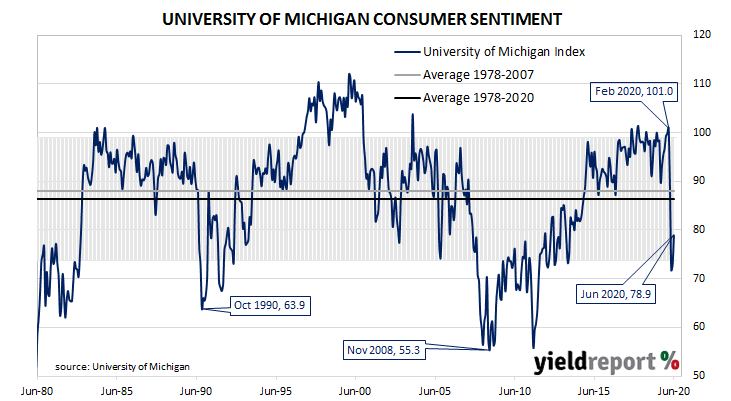Summary: US consumer confidence improved again in June; now back within “normal” range, albeit at the lower end; “bad times” still anticipated for rest of year; coronavirus resurgence, high jobless rate cited as major concerns.
US consumer confidence started 2020 at an elevated level. However, by March, surveys had begun to reflect a growing uneasiness with the global spread of COVID-19 and its reach into the US. After a plunge in April, US household confidence began to recover.
The latest survey conducted by the University of Michigan indicates the average confidence level of US households improved for a second consecutive month, albeit at a low level. The University’s preliminary reading from its Index of Consumer Sentiment registered 78.9 in June, better than the expected figure of 76 and a moderate improvement from May’s final figure of 72.9.
“The turnaround is largely due to renewed gains in employment, with more consumers expecting declines in the jobless rate than at any other time in the long history of the Michigan surveys,” said the University’s Surveys of Consumers chief economist, Richard Curtin.
US Treasury bond yields generally moved higher. By the end of the day; the US 2-year Treasury yield was unchanged at 0.20% but the 10-year yield had gained 3bps to 0.70% and the 30-year yield finished 6bps higher at 1.46%.
According to Curtin, the overall improvement in the index had occurred as price discounting and low interest rates had offset general pessimism. “Bad times financially in the economy as a whole during the year ahead were still expected by two-thirds of all consumers, and a renewed downturn was anticipated by nearly half over the longer term. The most often cited cause of a renewed downturn is a resurgence in the spread of the coronavirus, and the most often cited cause of a slow economic recovery is the financial damage from persistently high unemployment.”

